History

 The Space Shuttle Challenger mission, named STS-51-L, was the twenty-fifth Space Shuttle flight and the tenth flight of Challenger. The crew was announced on January 27, 1985, and was commanded by Dick Scobee. Michael Smith was assigned as the pilot, and the mission specialists were Ellison Onizuka, Judith Resnik, and Ronald McNair. The two payload specialists were Gregory Jarvis, who was assigned to conduct research for the Hughes Aircraft Company, and Christa McAuliffe, who flew as part of the Teacher in Space Project. The mission was originally scheduled for July 1985, but was delayed to November and then to January 1986. The mission was scheduled to launch on January 22, but was delayed until January 28, 1986. This was definitely a “less than ideal” situation. Delay after delay, maybe should have raised a serious red flag, but somehow, it did not. At least not to the people who could have changed the outcome.
The Space Shuttle Challenger mission, named STS-51-L, was the twenty-fifth Space Shuttle flight and the tenth flight of Challenger. The crew was announced on January 27, 1985, and was commanded by Dick Scobee. Michael Smith was assigned as the pilot, and the mission specialists were Ellison Onizuka, Judith Resnik, and Ronald McNair. The two payload specialists were Gregory Jarvis, who was assigned to conduct research for the Hughes Aircraft Company, and Christa McAuliffe, who flew as part of the Teacher in Space Project. The mission was originally scheduled for July 1985, but was delayed to November and then to January 1986. The mission was scheduled to launch on January 22, but was delayed until January 28, 1986. This was definitely a “less than ideal” situation. Delay after delay, maybe should have raised a serious red flag, but somehow, it did not. At least not to the people who could have changed the outcome.
One man…Roger Boisjoly knew that the Challenger space shuttle might fail catastrophically at any time. There may have been others I suppose, but none that chose to try to take action. Boisjoly knew that every mission was an accident waiting to happen. Knowing that, he tried to stop the launch on January 28, 1986. He had a definite sick feeling about this mission, but NASA refused to acknowledge his objections. That fact amazes me!! Boisjoly was a rocket engineer who worked for a company that NASA contracted with. He had noticed that the Challenger’s booster rockets had a major design flaw. Their elastic seals had a tendency to stiffen and unseal in cold weather. I’m sure that most of NASA simply took for granted that there would not be much cold weather in Florida. Nevertheless, on this occasion, the Challenger was scheduled for a winter launch. The time had come, and Boisjoly knew that the temperatures would be too low for the booster rocket seals to handle, even in Florida. He convinced colleagues at his engineering company to formally recommend NASA delay the launch. They did, but NASA ignored that recommendation. It was a life altering, or life ending decision on NASA’s part. Most of us know that the rest is history. The launch took place, the seals failed, and the Challenger exploded less than two minutes after it launched. That day, because of the foolish stubbornness and arrogance of NASA, seven people lost their lives. The air temperature on that January 28 was predicted to be a record-low for a Space Shuttle launch. The air temperature was forecast to drop to 18° F overnight before rising to 22° F at 6:00am and 26° F at the scheduled launch time of 9:38am. For most of us, those temperatures wouldn’t seem 
 to be so severe, but for that little seal, it was very severe. Why couldn’t they have swallowed their pride, and postponed a little longer until the temperature warmed a bit. Were we really in that big a rush to start that mission, that we were willing risk the lives of seven people in the attempt. I love the space program and all that it has accomplished, but the people who made that choice that day were foolish and selfish.
to be so severe, but for that little seal, it was very severe. Why couldn’t they have swallowed their pride, and postponed a little longer until the temperature warmed a bit. Were we really in that big a rush to start that mission, that we were willing risk the lives of seven people in the attempt. I love the space program and all that it has accomplished, but the people who made that choice that day were foolish and selfish.
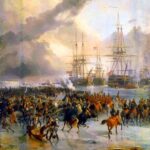
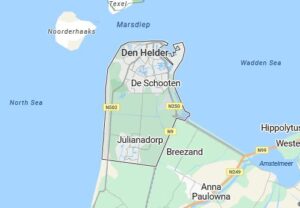 Anytime a country, engaged in a war, can capture a ship belonging to their enemy, they will find themselves strategically in a better position than before, but to capture the entire fleet…now that can mean the difference between winning and losing the war. On January 23, 1795, at Den Helder, North Holland, Netherlands, an extremely rare occurrence took place when a French Revolutionary Hussar cavalry regiment came across a Dutch fleet at anchor in the Nieuwediep, just east of the town of Den Helder. While it was not unusual to come across ships at anchor, what is extremely rare is an interaction between warships and cavalry. One being on land and one on the water, usually prevented any interaction, since the men on horses couldn’t carry guns big enough to reach the ships under normal conditions. The difference in this situation was, of course, that the Dutch fleet was frozen at anchor, not simply sitting at anchor. They had no place they could go. The men on the Dutch fleet knew that they were “sitting ducks” with no recourse, so after some of the Hussars had approached across the frozen Nieuwediep, a negotiation began. It was decided that all 14 Dutch warships would remain at anchor. It was a pretty easy negotiation, because in reality, the Dutch fleet had no other choice. They were now prisoners of war and their capture had happened without violence or even a battle. In an extremely rare even the Dutch fleet was captured by the French Revolutionary Hussars on horseback.
Anytime a country, engaged in a war, can capture a ship belonging to their enemy, they will find themselves strategically in a better position than before, but to capture the entire fleet…now that can mean the difference between winning and losing the war. On January 23, 1795, at Den Helder, North Holland, Netherlands, an extremely rare occurrence took place when a French Revolutionary Hussar cavalry regiment came across a Dutch fleet at anchor in the Nieuwediep, just east of the town of Den Helder. While it was not unusual to come across ships at anchor, what is extremely rare is an interaction between warships and cavalry. One being on land and one on the water, usually prevented any interaction, since the men on horses couldn’t carry guns big enough to reach the ships under normal conditions. The difference in this situation was, of course, that the Dutch fleet was frozen at anchor, not simply sitting at anchor. They had no place they could go. The men on the Dutch fleet knew that they were “sitting ducks” with no recourse, so after some of the Hussars had approached across the frozen Nieuwediep, a negotiation began. It was decided that all 14 Dutch warships would remain at anchor. It was a pretty easy negotiation, because in reality, the Dutch fleet had no other choice. They were now prisoners of war and their capture had happened without violence or even a battle. In an extremely rare even the Dutch fleet was captured by the French Revolutionary Hussars on horseback.
Jean-Charles Pichegru was the leader of the French units…the 8th Hussar Regiment and the Voltigeur company of the 15th Line Infantry Regiment of the French Revolutionary Army, who had been assigned to invade the Dutch Republic. The Dutch fleet was commanded by captain Hermanus Reintjes. This rare event took place during the War of the First Coalition, which was part of the French Revolutionary Wars. The little town of Den Helder is located at the tip of the North Holland peninsula, south of the island of Texel, near the shallow Zuiderzee bay (which means Southern Sea). The Zuiderzee was closed off and partly drained in the 20th century, and what is left of it now forms the freshwater IJsselmeer.
Nevertheless, in the fall of 1794, during the War of the First Coalition of the French Revolutionary Wars, the area was the site of one of the most bizarre captures in history. That day, the Dutch proclaimed the Batavian Republic, effectively ending the war with France and allying itself with France instead. Suddenly, the French were no longer enemies of the Dutch, which seems like a good move in light of the capture. Nevertheless, there were those among the Dutch Navy and the army there who remained loyal to the Stadtholder, and there were fears that Navy ships from Den Helder might sail for England to rejoin William V, Prince of Orange. For that reason, the new Batavian interim Government issued orders to all its fleets at Vlissingen, Hellevoetsluis and at Den Helder, not to fight against the French if they appeared, and to keep the ships at anchor to make sure they could be ready to defend the new Republic against the British.
This event might not have been possible, were it not for the fact that the winter of 1794–1795 was exceptionally cold, causing the Zuiderzee to freeze. Pichegru saw an opportunity and ordered General of Brigade Jan Willem de Winter to lead a squadron of the 8th Hussar Regiment to Den Helder. De Winter had been serving with the French since 1787 and would later command the Dutch fleet in the disastrous Battle of Camperdown. So, while he was successful in one operation, he might not have been the best leader in the long 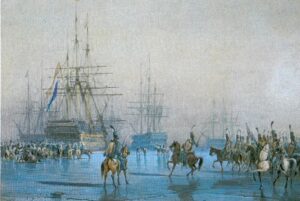
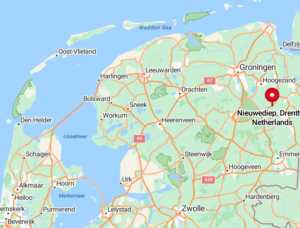 run. Still, the operation was carried out with no casualties. The French simply received the assurance from the Dutch captain that the vessels and their crews would remain at anchor until the political situation in the Dutch Republic would have become clear. The situation was finally settled in May 1795 under the Treaty of The Hague, when the Batavian Republic officially became a French ally. Now, its ships would serve a common cause.
run. Still, the operation was carried out with no casualties. The French simply received the assurance from the Dutch captain that the vessels and their crews would remain at anchor until the political situation in the Dutch Republic would have become clear. The situation was finally settled in May 1795 under the Treaty of The Hague, when the Batavian Republic officially became a French ally. Now, its ships would serve a common cause.
 Known as the “Millionaires’ Ship” because of the number of wealthy Americans who traveled by her, RMS Republic was a “palatial liner” and the flagship of White Star Line’s Boston service. She was a steam-powered ocean liner built in 1903 by Harland and Wolff in Belfast, Northern Ireland. The ship was equipped with some of the latest technology of the time, including a new Marconi wireless telegraphy transmitter. All that new equipment would come in handy when disaster struck.
Known as the “Millionaires’ Ship” because of the number of wealthy Americans who traveled by her, RMS Republic was a “palatial liner” and the flagship of White Star Line’s Boston service. She was a steam-powered ocean liner built in 1903 by Harland and Wolff in Belfast, Northern Ireland. The ship was equipped with some of the latest technology of the time, including a new Marconi wireless telegraphy transmitter. All that new equipment would come in handy when disaster struck.
In the early morning of January 23, 1909, while sailing from New York City to Gibraltar and Mediterranean ports with 742 passengers and crew. Captain Inman Sealby was in command, when RMS Republic entered a thick fog off the island of Nantucket, Massachusetts. True to her reputation, RMS Republic was carrying a number of illustrious passengers, such as James Ross Mellon, his wife Rachel Hughey Larimer Mellon, their daughter Sarah of the Mellon banking family and family maid; Mrs Sophie Mansfield Curtis, wife of George Munson Curtis (treasurer of the International Silver Company); Mrs Mary Harriman Severance, wife of Cordenio A Severance; 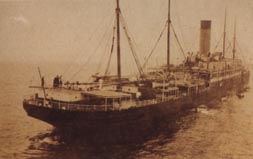 Professor John M Coulter, his wife and children; General Brayton Ives; St. Louis millionaire Samuel Cupples; historian Alice Morse Earle; and Mildred Montague, Countess Pasolini. Also, travelling in first class were Mr Leonard L. McMurray, who, in 1915, would survive the sinking of the Cunard liner Lusitania; and Mrs. Bessie Armstead Davis, daughter-in-law of senator Henry G. Davis of West Virginia with her two children.
Professor John M Coulter, his wife and children; General Brayton Ives; St. Louis millionaire Samuel Cupples; historian Alice Morse Earle; and Mildred Montague, Countess Pasolini. Also, travelling in first class were Mr Leonard L. McMurray, who, in 1915, would survive the sinking of the Cunard liner Lusitania; and Mrs. Bessie Armstead Davis, daughter-in-law of senator Henry G. Davis of West Virginia with her two children.
At 5:30am, disaster struck when RMS Republic collided with the Lloyd Italiano liner SS Florida just off Nantucket, Massachusetts. It took a while, but by about 8:40pm on January 24, 1909, RMS Republic slipped beneath the water and landed on the bottom of the ocean floor at a depth of about 250 feet. While the evacuation process was praised as flawless at the time, a total of six lives were lost, nevertheless. It has been rumored that RMS Republic was also carrying a treasure ranging from $250,000 to $3,000,000 in estimates of the value. Of course, it would likely be worth hundreds of millions of dollars, and maybe even a billion today. The SS Florida survived the collision and was later repaired.

These days, the wreck is owned by father and son Martin and Grant Bayerle, and a television series entitled “Billion Dollar Wreck” is in the process of recovering the contents of the ship. Some of the contents have been recovered, yielding significant amounts of gold and artifacts and brought to the surface by an ROV built specifically for the recovery. The total value of the recovered gold was estimated at $100–150 million. Of course, that is just rumor at this point. The shipwreck itself is 250 feet under water and much of it has deteriorated. It is said that the vaults that contain the alleged treasure appear to be very much intact. Again, time will tell.

 I don’t suppose many of the young people of today would even remember the Iran Hostage Crisis, but I remember. It all started on November 6, 1979, when a group of militarized Iranian college students belonging to the Muslim Student Followers of the Imam’s Line, who supported the Iranian Revolution, took over the US Embassy in Tehran. Inside the embassy were American diplomats and citizens, and their lives were about to be forever changed. The Western media called the crisis an “entanglement of vengeance and mutual incomprehension.” US President Jimmy Carter called the hostage-taking an act of “blackmail” and the hostages “victims of terrorism and anarchy.” Of course, the Iranians view it in a much different way, calling it an act against the US and its influence in Iran, including its perceived attempts to undermine the Iranian Revolution and its long-standing support of the Shah of Iran, Mohammad Reza Pahlavi, who was overthrown in 1979. The Shah left the US in December 1979 and was ultimately granted asylum in Egypt, where he died of cancer at age 60 on July 27, 1980.
I don’t suppose many of the young people of today would even remember the Iran Hostage Crisis, but I remember. It all started on November 6, 1979, when a group of militarized Iranian college students belonging to the Muslim Student Followers of the Imam’s Line, who supported the Iranian Revolution, took over the US Embassy in Tehran. Inside the embassy were American diplomats and citizens, and their lives were about to be forever changed. The Western media called the crisis an “entanglement of vengeance and mutual incomprehension.” US President Jimmy Carter called the hostage-taking an act of “blackmail” and the hostages “victims of terrorism and anarchy.” Of course, the Iranians view it in a much different way, calling it an act against the US and its influence in Iran, including its perceived attempts to undermine the Iranian Revolution and its long-standing support of the Shah of Iran, Mohammad Reza Pahlavi, who was overthrown in 1979. The Shah left the US in December 1979 and was ultimately granted asylum in Egypt, where he died of cancer at age 60 on July 27, 1980.
The attack did not go as it was originally planned. The students had planned a “symbolic” occupation, aimed at getting their cause before the media. The, they planned to release statements to the press and leave when government security forces came to restore order. This was documented by the placards that said, “Don’t be afraid. We just want to sit in.” Then, the embassy guards brandished firearms, so the protesters retreated. As he left, one of the students told the Americans, “We don’t mean any harm.” When it became clear that the guards would not use deadly force and that a large, angry crowd had gathered outside the compound to cheer the occupiers and jeer the hostages, the plan drastically changed. Then, according to one embassy staff member, buses full of demonstrators began to appear outside the embassy. A short time later, the Muslim Student Followers of the Imam’s Line broke through the gates. And so began the hostage crisis.
On January 27, 1980, six American diplomats who had managed to evade capture when all this began, were 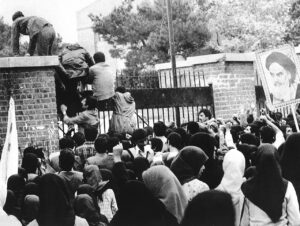 rescued by a joint CIA–Canadian effort. The crisis reached a climax in early 1980 after diplomatic negotiations failed to win the release of the hostages. President Jimmy Carter ordered the US military to attempt a rescue mission, which was called Operation Eagle Claw…using warships that included USS Nimitz and USS Coral Sea, which were patrolling the waters near Iran. That attempted rescue failed on April 24, 1980, and resulted in the death of one Iranian civilian and the accidental deaths of eight American servicemen after one of the helicopters crashed into a transport aircraft. The failure resulted in the resignation of US Secretary of State Cyrus Vance. Then, Iraq invaded Iran, beginning the Iran–Iraq War on September 1980. At that point, the Iranian government reached out to the US government, with Algeria acting as a mediator.
rescued by a joint CIA–Canadian effort. The crisis reached a climax in early 1980 after diplomatic negotiations failed to win the release of the hostages. President Jimmy Carter ordered the US military to attempt a rescue mission, which was called Operation Eagle Claw…using warships that included USS Nimitz and USS Coral Sea, which were patrolling the waters near Iran. That attempted rescue failed on April 24, 1980, and resulted in the death of one Iranian civilian and the accidental deaths of eight American servicemen after one of the helicopters crashed into a transport aircraft. The failure resulted in the resignation of US Secretary of State Cyrus Vance. Then, Iraq invaded Iran, beginning the Iran–Iraq War on September 1980. At that point, the Iranian government reached out to the US government, with Algeria acting as a mediator.
The hostage-takers, declaring their solidarity with other “oppressed minorities” and declaring their respect for “the special place of women in Islam,” released one woman and two African Americans on November 19, 1979. Before the release, these hostages were required by their captors to hold a press conference in which Kathy Gross and William Quarles praised the revolution’s aims and goals. Four more women and six African Americans were released the following day. According to the then United States Ambassador to Lebanon, John Gunther Dean, the 13 hostages were released with the assistance of the Palestine Liberation Organization, after Yassir Arafat and Abu Jihad personally traveled to Tehran to secure a concession. The only African American hostage that was not released that month was Charles A Jones Jr. One more hostage, a white man named Richard Queen, was released in July 1980 after he became seriously ill. He was later diagnosed with multiple sclerosis.
The remaining 52 hostages were held until January 20, 1981, a full 444 days of captivity. The agreed upon release came with an agreement, on January 19, 1981, in which Iran released all of the hostages and the US freed 8 billion US dollars of Iranian State assets from American banks. Then on January 20, 1981, US president-elect Ronald Reagan takes the oath of office. Just 20 minutes after Reagan’s oath, Iran released all 52 hostages, who were then flown to West Germany, by way of Algeria where former US president Jimmy Carter takes them back to the United States. Some people saw the release in a bit of a conspiracy light, 
 because of its closeness to the swearing in of President Reagan. I suppose we will never know for sure. Ten days after the release of the hostages a motorcycle parade takes place in New York City’s Broadway. Whatever the case may be, and no matter what kind of celebration was held in their honor, the lives of those hostages were forever changed. You can’t lose 444 days of your life and stay the same. Too much was forever missing. Things they could never get back.
because of its closeness to the swearing in of President Reagan. I suppose we will never know for sure. Ten days after the release of the hostages a motorcycle parade takes place in New York City’s Broadway. Whatever the case may be, and no matter what kind of celebration was held in their honor, the lives of those hostages were forever changed. You can’t lose 444 days of your life and stay the same. Too much was forever missing. Things they could never get back.
 We all know that travel plans can be hampered due to weather conditions, and for drivers, one of the worst weather situations for driving is fog. Of course, weather can affect more than just travel plans. Over the years, we have seen many sporting events called for weather. Everything from snow, to rain, and even fog, although a game called for fog is probably less likely to happen than rain or snow. Still, it isn’t outside the realm of possibilities. It wouldn’t make good sense to try to catch a baseball in the fog. Someone is likely to get hurt. So, games would need to be called for fog, but maybe because a lot of games are played in the afternoon, the fog has had time to burn off.
We all know that travel plans can be hampered due to weather conditions, and for drivers, one of the worst weather situations for driving is fog. Of course, weather can affect more than just travel plans. Over the years, we have seen many sporting events called for weather. Everything from snow, to rain, and even fog, although a game called for fog is probably less likely to happen than rain or snow. Still, it isn’t outside the realm of possibilities. It wouldn’t make good sense to try to catch a baseball in the fog. Someone is likely to get hurt. So, games would need to be called for fog, but maybe because a lot of games are played in the afternoon, the fog has had time to burn off.
In one strange occurrence, during a soccer match between Charlton Athletic and Chelsea in 1937, in the United Kingdom, goalkeeper for the UK’s Charlton Athletic, 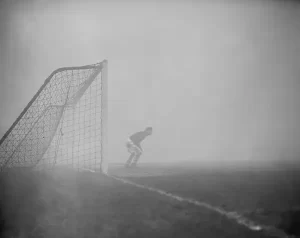 Sam Bartram once stood alone on the field for 15 minutes because he didn’t realize the game had been called off due to heavy fog. Now, if you ask me, that’s ludicrous. Why would he just stand there at the goal for 15 minutes after the game was called!!
Sam Bartram once stood alone on the field for 15 minutes because he didn’t realize the game had been called off due to heavy fog. Now, if you ask me, that’s ludicrous. Why would he just stand there at the goal for 15 minutes after the game was called!!
During the match, a thick fog rolled over the field. It was a very thick fog. The referees decided that this fog was so think that the players were not safe running all over the field, much less dodging a ball too. So, the match was called off, but somehow, Bertram didn’t hear the call, or the whistle or whatever was used to call the game, so he stood there at is post…the goal at the end of the field…alone. Somehow, no one told Bertram that the game had been called, probably because the couldn’t see that he was still out there. So, 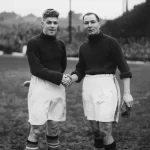 Bertram waited for 15 minutes for the ball to come his way…a full 15 minutes. That’s crazy. How could he have had no idea? Well, somehow Bertram just thought his team was on a “crazy offensive run, pinning down the Chelsea defense, but somehow failing to actually score a goal.” So, there he stood, until finally, a police officer went on the field, and with a look of shock, said something like, “What the heck are you doing? The game’s over, mate.” Well, a rather embarrassed Bartram shuffled off to the locker room, where he was met with unrestrained laughter by his rather rude teammates. They all knew that he was still out there, and no one had made the move to go get him. Well, Bertram got over it, because they were his teammates, and even if it was misguided, it was just a joke after all. I’m sure that after that, he stayed much more alert in the fog that tends to plague the United Kingdom.
Bertram waited for 15 minutes for the ball to come his way…a full 15 minutes. That’s crazy. How could he have had no idea? Well, somehow Bertram just thought his team was on a “crazy offensive run, pinning down the Chelsea defense, but somehow failing to actually score a goal.” So, there he stood, until finally, a police officer went on the field, and with a look of shock, said something like, “What the heck are you doing? The game’s over, mate.” Well, a rather embarrassed Bartram shuffled off to the locker room, where he was met with unrestrained laughter by his rather rude teammates. They all knew that he was still out there, and no one had made the move to go get him. Well, Bertram got over it, because they were his teammates, and even if it was misguided, it was just a joke after all. I’m sure that after that, he stayed much more alert in the fog that tends to plague the United Kingdom.
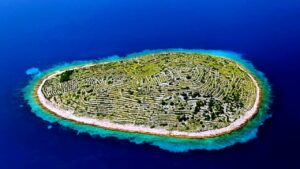
 Baljenac (also known as Bavljenac)…a tiny island in the Adriatic Sea, just off the coast of Croatia, seems to be showing up all over the internet these days. When you first see it, you will be…rather shocked by its appearance, because well, it really looks like a giant fingerprint. My first thought was, “Is that natural, or man-made?” Well, of course, the structures are man-made, but their original intent was not to create a giant fingerprint. These dry-stone walls that make up the web that covers the island, have been there for centuries, and their purpose is very different than how they make the island look from the air.
Baljenac (also known as Bavljenac)…a tiny island in the Adriatic Sea, just off the coast of Croatia, seems to be showing up all over the internet these days. When you first see it, you will be…rather shocked by its appearance, because well, it really looks like a giant fingerprint. My first thought was, “Is that natural, or man-made?” Well, of course, the structures are man-made, but their original intent was not to create a giant fingerprint. These dry-stone walls that make up the web that covers the island, have been there for centuries, and their purpose is very different than how they make the island look from the air.
The island is located in the Sibenik archipelago on the Dalmatian coast. The island is quite small…just .75 square miles, and it is completely covered by the web of dry-stone walls. The island’s oval shape along with the web of walls makes it look amazingly like a fingerprint. The long lines of low walls, combined with the oval shape bring about the amazing resemblance. Apparently, these dry-stone walls are not that uncommon in west European nations such as Ireland, England and Scotland, much of Croatia’s countryside. The dry-stone walls hug many of these island nations. Originally, they were used for centuries, to mark boundaries between adjacent agricultural lands. That might make sense, but the walls on Fingerprint Island don’t seem to allow for a very big garden, much less be a separation of agricultural lands. Aside from defining agricultural boundaries, the walls also keep out strong winds known as “Bura” that would make cultivation impossible in exposed locations along the coastline. The walls, however strange and however strange they make the landscape look, served a great purpose, especially since they withstood the test of time.
The walls are unusual because they were built without mortar to hold the stones together. Instead, builders carefully select stones and stack them snug together like puzzle pieces. That seems like a recipe for the collapse of the walls, and yet they have stood in place for centuries. They did have large amounts of rock to work with, because much of Croatia’ coastline is characterized by karst topography…meaning it’s rocky. If 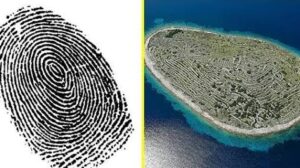 you’re going to grow much on rocky terrain, you have to remove the rocks. So, the farmers painstakingly picked rocks out of the soil by hand and then used the same stones to construct walls around geometric plots. The work, planned to create boundaries, created grids in some cases…and the grids stretched for miles. That seems odd in itself, but in the case of Baljenac (Fingerprint Island), an island just .31 miles long, the walls stretch for 14.29 miles. Because of the length of time the grid has been there, the Croatian government has been pushing the UNESCO to include the island and its dry-stone walls in their World Heritage Sites list.
you’re going to grow much on rocky terrain, you have to remove the rocks. So, the farmers painstakingly picked rocks out of the soil by hand and then used the same stones to construct walls around geometric plots. The work, planned to create boundaries, created grids in some cases…and the grids stretched for miles. That seems odd in itself, but in the case of Baljenac (Fingerprint Island), an island just .31 miles long, the walls stretch for 14.29 miles. Because of the length of time the grid has been there, the Croatian government has been pushing the UNESCO to include the island and its dry-stone walls in their World Heritage Sites list.
 Long before James Madison became out fourth President of the United States, he served in a number of other positions. Early on, Madison emerged as an important leader in the House of Representatives and was a close adviser to President George Washington. While many of the early leaders of our nation understood and were prepared to fight for our freedom, they weren’t necessarily eloquent speakers or writers, but then again, many politicians today also have speech writers. I guess each felt the need to work on the important things, and delegate the rest. Since James Madison was well-known as an excellent writer, President Washington asked him to write a letter to Congress for him expressing that he was excited to work with them. Washington wasn’t the greatest wordsmith, and Madison was an excellent writer, so he had Madison do the job.
Long before James Madison became out fourth President of the United States, he served in a number of other positions. Early on, Madison emerged as an important leader in the House of Representatives and was a close adviser to President George Washington. While many of the early leaders of our nation understood and were prepared to fight for our freedom, they weren’t necessarily eloquent speakers or writers, but then again, many politicians today also have speech writers. I guess each felt the need to work on the important things, and delegate the rest. Since James Madison was well-known as an excellent writer, President Washington asked him to write a letter to Congress for him expressing that he was excited to work with them. Washington wasn’t the greatest wordsmith, and Madison was an excellent writer, so he had Madison do the job.
James Madison was excited to be a part of this first administration and wanted to give it his very best effort. So, in one of his first official actions under President George Washington, Madison wrote a beautiful letter to Congress. Congress was very impressed with the “letter from President Washington” and wanted to impress him with a letter of their own. So, naturally, they chose the best qualified person to write a response to President Washington…you guessed it, James Madison. So, Madison wrote a response to the original letter, that he wrote, saying that Congress was also very excited to be working with the president.
Under normal circumstances, you would expect that the two letters would be the end of the matter, and the new administration would proceed to get down to business. You would be wrong. President Washington decided to send a response to the response, and to make matters even more ludicrous, Congress sent a response to  that response as well. As it turns out, and of course, Madison wrote those other letters too. So, all in all, Madison had a whole little conversation with himself by mail in the form of four separate letters. Of course, he still represented the president and congress, but it’s quite likely that no one actually read the letters before they were sent, or at least didn’t really read them carefully…not until the received them anyway. Nevertheless, James Madison wanted to do the very best job he could for both President Washington and for Congress. If he had not don’t an exceptional job, they would not ask for his help again, and his career could have been over. Somehow, I don’t think that was his real motive in writing the excellent letters. I think he wanted to be of good service to the president. Still in the end, Madison’s first official act for President Washington was to write four letters…to himself.
that response as well. As it turns out, and of course, Madison wrote those other letters too. So, all in all, Madison had a whole little conversation with himself by mail in the form of four separate letters. Of course, he still represented the president and congress, but it’s quite likely that no one actually read the letters before they were sent, or at least didn’t really read them carefully…not until the received them anyway. Nevertheless, James Madison wanted to do the very best job he could for both President Washington and for Congress. If he had not don’t an exceptional job, they would not ask for his help again, and his career could have been over. Somehow, I don’t think that was his real motive in writing the excellent letters. I think he wanted to be of good service to the president. Still in the end, Madison’s first official act for President Washington was to write four letters…to himself.
 Erno Rubik is a name that is known worldwide…well, maybe not the name Erno, but certainly the name Rubik. Erno Rubik Jr was born on July 13, 1944, in Budapest, Hungary, to Erno Rubik Sr, a flight engineer at the Esztergom aircraft factory, and Magdolna Szántó, a poet. He was born during World War II and has lived all of his life in Hungary. He credits his father as his inspiration for his successes. The younger Rubik became famous for inventing the Rubik’s Cube and other puzzles, but his work isn’t all about puzzles. In fact, much of his recent work involves the promotion of science in education. Rubik is also involved with several organizations such as Beyond Rubik’s Cube, the Rubik Learning Initiative, and the Judit Polgar Foundation. All of these organizations aim to engage students in science, mathematics, and problem solving at a young age.
Erno Rubik is a name that is known worldwide…well, maybe not the name Erno, but certainly the name Rubik. Erno Rubik Jr was born on July 13, 1944, in Budapest, Hungary, to Erno Rubik Sr, a flight engineer at the Esztergom aircraft factory, and Magdolna Szántó, a poet. He was born during World War II and has lived all of his life in Hungary. He credits his father as his inspiration for his successes. The younger Rubik became famous for inventing the Rubik’s Cube and other puzzles, but his work isn’t all about puzzles. In fact, much of his recent work involves the promotion of science in education. Rubik is also involved with several organizations such as Beyond Rubik’s Cube, the Rubik Learning Initiative, and the Judit Polgar Foundation. All of these organizations aim to engage students in science, mathematics, and problem solving at a young age.
All his life, the younger Rubik displayed artistic abilities. He attended the Secondary 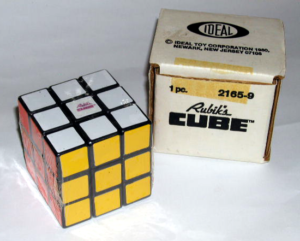 School of Fine and Applied Arts, from 1958 to 1962, specializing in sculpture. He attended the Budapest University of Technology from 1962 to 1967, where he also became a member of the Architecture Faculty. He then attended the Hungarian Academy of Applied Arts and was in the Faculty of Interior Architecture and Design from 1967 to 1971. While a professor of design at the academy, Rubik pursued his hobby of building geometric models. One of these became the prototype of his cube. It was made of 27 wooden blocks, with seems common to Rubik’s Cube experts of today, but when it was built, it actually took Rubik a month to solve the problem of the cube!! Go figure!! As of June 2018, the world record for solving the Rubik’s Cube is 4.22 seconds.
School of Fine and Applied Arts, from 1958 to 1962, specializing in sculpture. He attended the Budapest University of Technology from 1962 to 1967, where he also became a member of the Architecture Faculty. He then attended the Hungarian Academy of Applied Arts and was in the Faculty of Interior Architecture and Design from 1967 to 1971. While a professor of design at the academy, Rubik pursued his hobby of building geometric models. One of these became the prototype of his cube. It was made of 27 wooden blocks, with seems common to Rubik’s Cube experts of today, but when it was built, it actually took Rubik a month to solve the problem of the cube!! Go figure!! As of June 2018, the world record for solving the Rubik’s Cube is 4.22 seconds.

The Rubik’s Cube proved to be a useful tool for teaching algebraic group theory, and in late 1977 Konsumex, Hungary’s state trading company, began marketing it. From there, in 1980, the Rubik’s Cube went global. It was marketed throughout the world, and over 100 million authorized units, with an estimated 50 million unauthorized imitations, were sold, mostly during its subsequent three years of popularity. I guess you could say that Erno Rubik had arrived!! Approximately 50 books were published describing how to solve the puzzle of Rubik’s Cube. Following his cube’s popularity, Rubik opened a studio to develop designs in 1984. One of the products that came out of that studio was another popular puzzle toy, Rubik’s Magic.
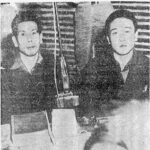
 When a soldier is told to guard an area for his country, he does just that, but on this occasion, this job of “guarding” an area, or an island in this case, was taken to extremes. For a time, the Allies struggled against the Japanese, but by 1945, the tide of World War II had turned decisively against Japan. The Japanese got really nervous as the Americans advanced across the Pacific, drawing ever closer to the Japanese home islands. The American strategists set their sights on Iwo Jima, a small volcanic island about 750 miles south of Tokyo. They saw it as a suitable staging area for an eventual invasion of Japan. Of course, the Japanese were very aware of the threat posed by Iwo Jima landing in American hands. So, they knew they had to garrison the island.
When a soldier is told to guard an area for his country, he does just that, but on this occasion, this job of “guarding” an area, or an island in this case, was taken to extremes. For a time, the Allies struggled against the Japanese, but by 1945, the tide of World War II had turned decisively against Japan. The Japanese got really nervous as the Americans advanced across the Pacific, drawing ever closer to the Japanese home islands. The American strategists set their sights on Iwo Jima, a small volcanic island about 750 miles south of Tokyo. They saw it as a suitable staging area for an eventual invasion of Japan. Of course, the Japanese were very aware of the threat posed by Iwo Jima landing in American hands. So, they knew they had to garrison the island.
Ymakage Kufuku and Matsudo Linsoki were two Japanese machine gunners assigned to the island’s garrison. I can only imagine how they must have felt, knowing that the attack was imminent, and that they could only sit and wait for it. In February of 1945, Iwo Jima was invaded in one of the fiercest and bloodiest battles of the entire Pacific War. The Japanese soldiers fought frantically, almost to the last man. Japanese soldiers were taught that it was more honorable to die that survive, if they lost the war. They were taught that rather than surrender, the honorable thing to do was to commit suicide, so out of a garrison of 21,000 Japanese, nearly 20,000 died before the island was declared secured.
Kufuku and Linsoki were among the few Japanese soldiers who didn’t die in the fighting and didn’t commit suicide. They also believing what their government told them about Americans torturing and killing prisoners, so they were too afraid to surrender. The two men felt like they had no choice but to go underground. They also expected that soon the Japanese would be able to take the island back, so they hid during the day in the multitude of tunnels that were all over the island. They came out at night pilfer food and other necessaries from the American garrison’s supply and trash dumps. It was a tough kind of life, but by doing this, Kufuku and Linsoki managed to survive for a long time in a barren and inhospitable island that was mighty short on both vegetation and game. The Americans weren’t interested in exploring Iwo Jima’s hard landscape, a fact that allowed the two Japanese soldiers to go unnoticed for years.
Finally, on January 6th, 1949, two US Air Force corporals in a Jeep spotted a couple of pedestrians in uniforms that looked to be a few sizes too big. The men were walking alongside a road. The soldiers thought the men were Chinese laborers. The men spoke no English and they didn’t seem to want to talk, but the American airmen just assumed they were hitchhiking to the island’s main base and gave them a lift. They dropped them off in front of the garrison’s headquarters building. That probably left Kufuku and Linsoki a little bit unnerved. Nevertheless, they didn’t want to seem suspicious, so they wandered around the American base for hours, at least until a passing American sergeant realized that they were Japanese and took them in. The men were 
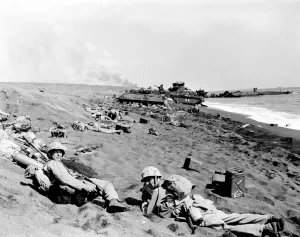 interrogated, and afterward, they took their captors to their hideout. There, to their amazement, the Americans found a cave richly stocked with canned foods, flashlights, batteries, uniforms, boots, shoes, socks, and other goods that the pair had been pilfering over the years. I’m quite sure they recognized some of the items from the base. While the Japanese soldiers did no real harm, their self-imposed secret mission had come to an end.
interrogated, and afterward, they took their captors to their hideout. There, to their amazement, the Americans found a cave richly stocked with canned foods, flashlights, batteries, uniforms, boots, shoes, socks, and other goods that the pair had been pilfering over the years. I’m quite sure they recognized some of the items from the base. While the Japanese soldiers did no real harm, their self-imposed secret mission had come to an end.
 During World War II, a number of royal families considered leaving their countries for a time, due to potential dangers to them and their families. Many of the royals decided that they shouldn’t leave. As for Prince Bernhard, husband of Crown Princess Juliana was serving in the Royal Airforce. It was thought that Princess Juliana, and her daughters would be safer in Canada, so they relocated in in June of 1940. In the years she was there, the couple became pregnant with their third child, who would now be born in Canada, unless something drastically changed.
During World War II, a number of royal families considered leaving their countries for a time, due to potential dangers to them and their families. Many of the royals decided that they shouldn’t leave. As for Prince Bernhard, husband of Crown Princess Juliana was serving in the Royal Airforce. It was thought that Princess Juliana, and her daughters would be safer in Canada, so they relocated in in June of 1940. In the years she was there, the couple became pregnant with their third child, who would now be born in Canada, unless something drastically changed.
With the relocation of the royal family, and now the impending birth, which could, I suppose cause a bit of a problem like the one that exists in the United States, when a child who could later go on to run for president, is born in another country. Our law requires that the child be born on US soil, like a military base or something. Of course, that may not be the law in the Netherlands, but whatever the case may be, the Canadian government was compelled to do something anyway. So, the decision was made that in 1943, the Canadian government temporarily declared a maternity ward of Ottawa Civic Hospital to be extraterritorial. This struck me as funny, because at first glance, I thought it said extraterrestrial!! I thought, “What are they talking about??” Then, I realized that my first glance had been  deceiving. I suppose that is good news for the royal family of the Netherlands, who would not be the parents of an alien from outer space.
deceiving. I suppose that is good news for the royal family of the Netherlands, who would not be the parents of an alien from outer space.
Comedy aside, this change was made because Dutch princess Margriet was to be born at the maternity ward of Ottawa Civic Hospital. With this change, the maternity ward suddenly fell outside of the Canadian domain, causing it to be unaffiliated with any jurisdiction and technically international territory. The purpose was to ensure that the newborn would derive her citizenship from her mother only, thus making her solely Dutch. While this change didn’t matter much since Princess Margriet was a girl, and thereby third in line for the throne. It could have been very important, if the child had been male, and as such, the heir of Princess Juliana. Many countries with a royal family move the sons ahead of any older sisters in the line of succession to the throne. England recently changed that law, meaning that HRH Princess Charlotte (currently 3rd) was not passed by HRH Prince Louis  (currently 4th) in the line of succession there.
(currently 4th) in the line of succession there.
The birth of Princess Margriet came about thusly. “It was the height of the Second World War, things were still not going well for the Allies, when a brief bit of good news came in the midst of darkness. The German forces had already rolled over much of Europe, smashing resistance before them, including the brave but futile defense of Holland. The Dutch Crown Princess Juliana and her two daughters had fled the German invasion and arrived in Canada in June 1940. On January 9, 1943, Dutch Princess Margriet was born at the Ottawa Civic Hospital. Crown Prince Bernhard came from London where he was serving with the Royal Air Force, to be present for the birth. The Royal Family returned to Holland shortly after the war.”

